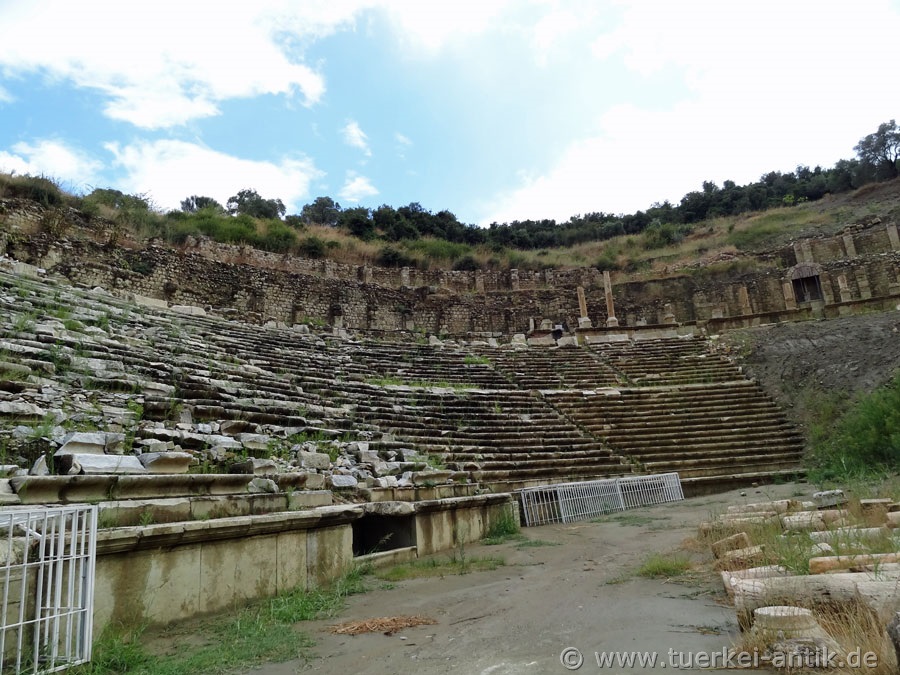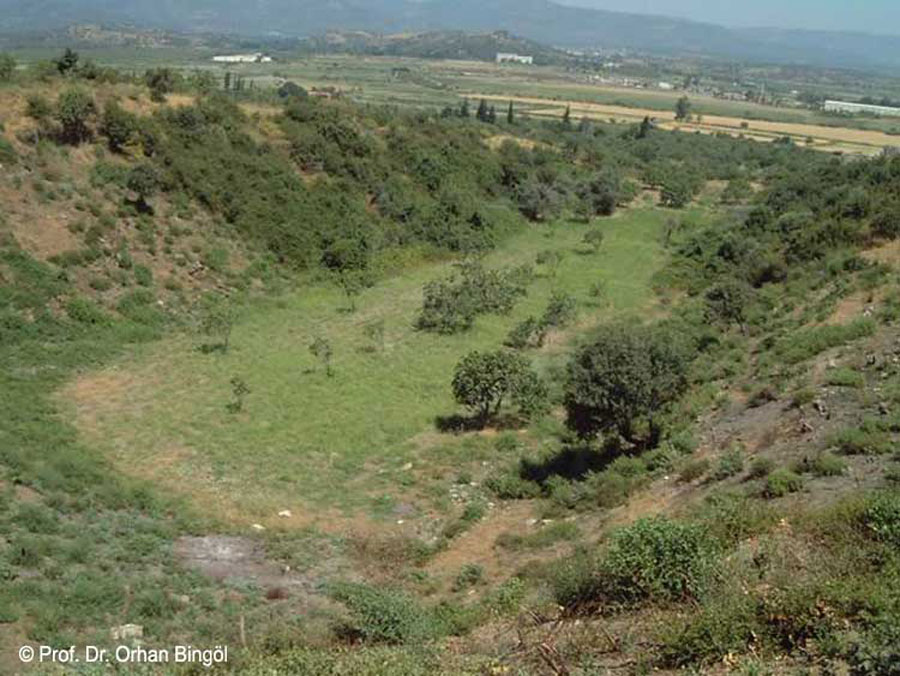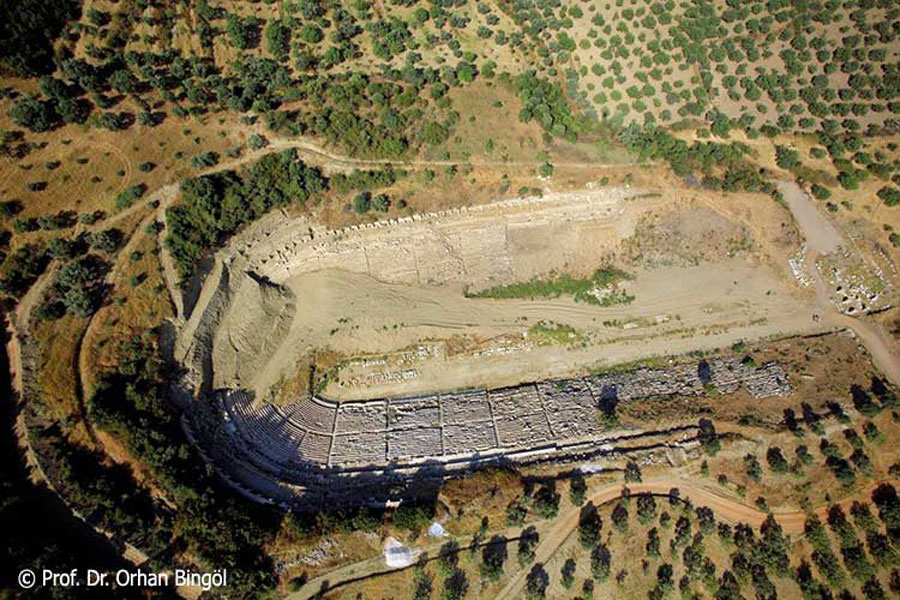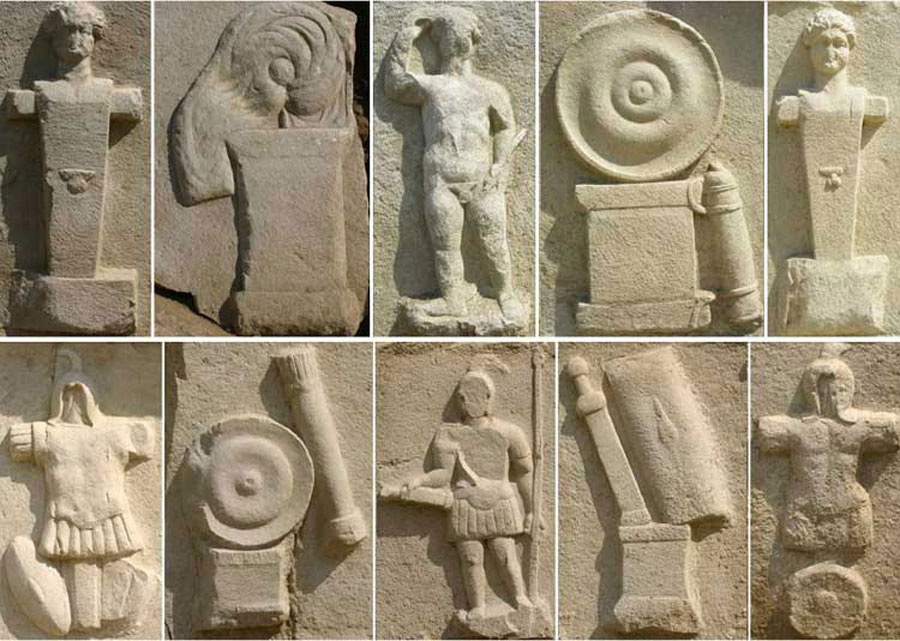 |
|
Ancient stadiums in Turkey Magnesia ad Maeandrum |
||||||||||||
 |
|
|||||||||||
|
||||||||||||
|
Still in 1984 one could only guess that there had been a stadium in the horseshoe-shaped depression in the eastern part of the former city area. Only the shape of the depression suggested a stadium. Today, one can clearly see how powerful the deposits of the last centuries were or still are. |
||||||||||||
| The history of Magnesia ad Maeandrum: | ||||||||||||
|
According to legend, the town of Magnesia was founded a generation before the Trojan War by magnets from Thessaly. By Alexander the Great magnesia became Macedonian, fell to various Diadochi, became selective and experienced its cultural heyday with the kingdom of Pergamum in the 2nd century BC. Magnesia is mentioned in the works of Herodotus, Diodorus Siculus and Pausanias, among others. A war with Miletus was ended in 196 B.C. by a peace treaty, after 190 B.C. the city was liberated by the Romans. In 133 B.C. magnesia was bequeathed to the Roman Empire. Destroyed by an earthquake in 17 A.D., the city was rebuilt by the Roman Emperor Tiberius within twelve years from his own means. As early as 114 A.D. there was an early Christian community there, which regularly sent its bishops to the councils in the following centuries. After the conquest and plunder by the Goths in 262 AD, Magnesia, like the neighbouring villages of Ephesus and Miletus, could never fully recover. Although it still became a Byzantine bishop's town and received a ring wall against the onslaught of Persians and Seljukes, it was little more than a Byzantine border fortress. As a result of floods, epidemics and other plagues, Magnesia was gradually abandoned by its last inhabitants and fell into decay.
In the course of the large excavation campaigns in Asia Minor by French, German and British scientists, magnesia was also rediscovered. In the years 1891-1893, excavations were carried out by the Berlin museums under the direction of Carl Humann, during which the remains of the Temple of Zeus and the Temple of Artemis of Hermogenes were uncovered. After the completion of the first excavation campaign in 1893, the excavations were suspended until 1984. |
||||||||||||
 |
||||||||||||
| View 1984 | ||||||||||||
 |
||||||||||||
| The Stadium 2015 | ||||||||||||
|
|
||||||||||||
|
|
||||||||||||
|
|
||||||||||||
|
|
||||||||||||
|
|
||||||||||||
|
|
||||||||||||
|
|
||||||||||||
|
|
||||||||||||
 |
||||||||||||
|
© Prof. Dr. Orhan Bingöl |
||||||||||||
|
The transition from the rows of seats to the base of the arena was decorated in places with relief panels showing scenes from the competitions. Some of these reliefs have been preserved and can still be admired in their original form on site. |
||||||||||||
| Photos: @chim, Monika P., Prof. Dr. Orhan Bingöl | ||||||||||||
| Translation aid: www.DeepL.com/Translator | ||||||||||||
| Source: Wikipedia and others | ||||||||||||
|
|
||||||||||||

